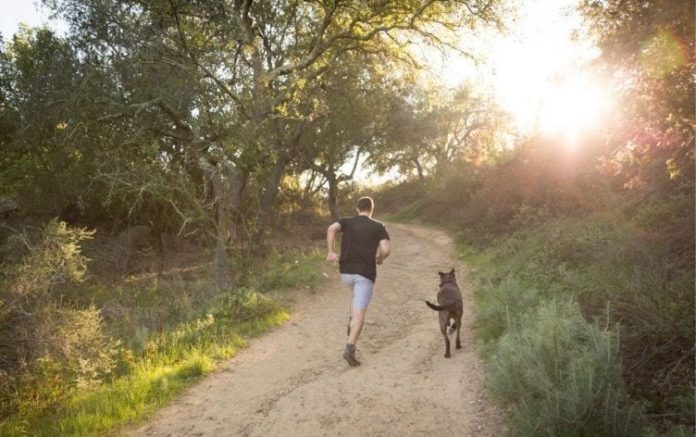
Even if the weather isn’t ideal or they don’t really feel like exercising, dog owners have a commitment to their pets to get moving regularly. And researchers have found people who walk their dogs get more exercise than non-owners, which can lead to more weight loss over time.
Here, a look at how dog ownership can foster healthy habits, the research behind it and why fostering and volunteering can lead to weight loss, too.
HOW HAVING A DOG CAN TRIGGER HEALTHY HABITS
“One of the biggest correlates of dog-walking is a sense of responsibility or obligation,” says Katie Potter, PhD, assistant professor of kinesiology and director of the Behavioral Medicine Lab at the University of Massachusetts Amherst, whose research examines the relationship between dog ownership and motivation to exercise. “This is one of the reasons dog-walking has the potential to be a more sustainable form of physical activity — it taps into something people care about deeply: The health and happiness of their beloved dog.”
A walking habit isn’t just necessary for your dog’s well-being, it’s good for you, too. Taking all of those extra steps and consistently burning extra calories may help dog-walkers lose weight more easily than if they didn’t have a dog.
THE RESEARCH
A recent study found people who walk their dogs are more likely to meet their daily physical activity goals. Dog owners walked 160 minutes more per week than non-owners, which contributed to 87% of dog owners meeting their daily physical-activity guidelines, compared to 63% for non-owners. Dog-walkers took 2,000 more steps and got 13 more minutes of moderate-to-vigorous activity daily than non-owners. This is important because walking at a brisk pace has been shown to help increase longevity and overall health.
The research also showed dog-walkers actively participated in other forms of physical activity without their pets, suggesting their dog-walking responsibilities didn’t significantly displace other physical activity from their schedules.
Other research has shown older people who walk their dogs walk at a moderate pace for 22 minutes longer on a daily basis than non-owners, and they log 2,760 additional steps in the process. The extra movement helps older dog owners meet their physical-activity goals more often than non-owners (87% versus 47%).
EVEN FOSTERING OR VOLUNTEERING HELPS
“We are not sure of the direction of the relationship: Do more active people get dogs or do dogs make people more active?” notes Potter. To start getting at this question, Potter recently completed a small pilot study with 11 non-dog owners. “These individuals fostered a shelter dog for 6 weeks, and we looked at changes in physical activity that occurred after taking a dog into the home,” explains Potter. “At 6 weeks, participants reported walking their dog, on average, 6.5 days per week, increased their step count by 1,192 steps per day and accumulated 13 more daily minutes of moderate-vigorous physical activity.”
If you’re intrigued by the idea of dog-walking for exercise but can’t commit to dog ownership, find out if your local animal shelter needs you. “More and more animal shelters are looking for volunteers to help dogs get outside and exercise,” says Melanie Sartore-Baldwin, associate professor of kinesiology at East Carolina University, who studies the effectiveness of using shelter dogs to increase physical activity levels. “Dogs that stay kenneled too long can become psychologically compromised as a result. It’s a win-win for humans and animals, who both receive the health benefits of daily walks.”
THE BOTTOM LINE
“Anything that motivates people to get out and be active is good for maintaining their health,” says study author Philippa Dall, PhD, senior research fellow at Glasgow Caledonian University in Scotland. “Walking the dog can also be a social activity: Meeting other dog owners while out walking your own dog, which may lead to feeling less isolated and more rooted in the community, although that is speculation, not derived from the research.”
If you want to get a dog because you’re eager to walk more frequently, with hopes of losing weight, don’t dismiss the fact dog ownership is a serious, long-term commitment. But if you have room in your home, heart and budget for a dog, having the pet can help you develop and maintain a healthy walking habit, which could lead to weight loss. “Most breeds require at least 30 minutes of walking every day, but you can also look for a higher-energy breed if you are dedicated to walking more,” says Carri Westgarth, PhD, MPH, a lecturer in human-animal interaction at the University of Liverpool in England, who authored the recent study about dog-walking.
If you want to get started, check out this resource created by Westgarth that can help you increase your dog-walking over the course of 6 weeks.
































